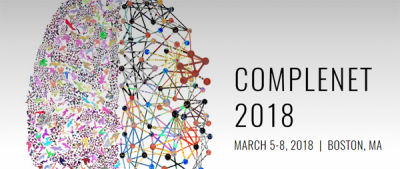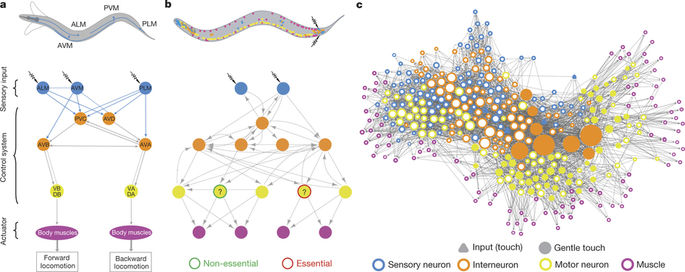Complenet 2018 Report
It’s been a while since I wrote a report for a conference I attended and I think it is high time to fix this now. Last week I had the pleasure to be at Complenet, which was hosted by the Network Science Institute at Northeastern University, Boston. I was there to present my work on the meme evolutionary arms race after popularity spikes. Then I had two posters, on my network backboning algorithm — arguably the best way to filter out noise in your network connections, at least according to me 🙂 — and how to detect the degree of hierarchy of your directed networks.
Complenet was a great occasion to reconnect with fun and impossibly smart people like Laszlo, Aaron, Isabel and Gourab. I also had the occasion to talk with new people and learn about the amazing things they are doing. A particular shout out to Ieke De Vries — who works on networks of criminal activities — and Carolina Mattsson — who tracks down money flows in complex networks.

One advantage of small conferences like Complenet over humongous Goliaths like NetSci is that they only have a plenary session, and so you can actually see everything instead of living in the constant fear of missing out on something. I am particularly enthusiastic about the plenary talk by David Lazer. He had put together a very interesting study, connecting Twitter accounts to voting records to show the typical characteristics of accounts spreading fake news on Twitter. I’m not going to talk about Fernanda Viégas & Martin Wattenberg‘s talk on visualizing deep learning here. As usual it was absurdly good, but I already sung their praise in the past and I feel I have to start diversifying.
For the rest of the first day, the two talks that caught my attention were the ones of Megha Padi and Alessio Cardillo (in collaboration with Jesus Gomez-Gardeñes). Megha showed us a way to use networks for the difficult problem of genetic mutations causing diseases in humans. As you probably know, multiple genes are involved in each of our traits, and they interact with each other. It follows that, often, diseases are caused by an ensemble of perturbations in the genetic code. With her ALPACA method, one can create communities of interacting genes to shed some light on these interactions.
Alessio described a network model, where agents have to decide whether to vaccinate or not. It is important to understand how the no-vax movement works and why it can arise. Alessio shows that there are scenarios in which an individual can dodge the cost of vaccination and still reap its benefits, if you were covered by herd immunity anyway. So, if we want to root out this behavior, we have to stop treating it like a completely irrational thing to do. (By the way, Alessio’s collaborator, Jesus, had another talk on hunter-gatherer social networks and it was also pretty fantastic)
For me, Emma Towlson‘s talk dominated the second day. One of the big theoretical results of the past few years is about network controllability. This is a method to figure out which nodes to influence in a network to get the entire system into the state we desire. Emma et al. showed us that this is theory no more. They took the C. Elegans worm, an organism for which we have a complete neural map, and showed how they can predict which neurons are necessary for its signature sine wave movements and which ones are redundant. Acting on the control neurons will significantly change the worm’s movement patterns.
J.-P. Onnela did double duty: besides his plenary talk on inferring parameters for network models, he also presented a great work on social networks in rural India. This talk is tied for best talk of the third day together with the already mentioned one about hunter-gatherer social networks by Jesus. It also shares some similarities, in that it maps social systems in domains that we rarely study — admittedly we’re a bit too focused on Twitter and Facebook and we overlook actual social networks. JP’s results show that a few factors have a great influence whether a social tie will be created or not, chief among them caste membership.
Two students from Tina Eliassi-Rad‘s group — Tim Larock and Xindi Wang — wrapped up the last day perfectly. Tina and her people are doing great work in the conjunction between network and computer science, and I particularly like their approach to the problem of network completion. When you want to use a network somebody else gathered, you often have the problem that: (i) the network is not complete, and (ii) you don’t know how the sample was collected. Tina’s work helps you complete the network, while being completely agnostic about how the network was created in the first place.
To conclude I want to mention William Grant‘s poster. I had to miss it because I was defending my own posters in the same session, but I had the pleasure to see him present during the poster slam and he was brilliant. He won a Poster Slam award, and deservedly so. But then again, he works with Sebastian Ahnert, so of course he must be good.
See you at the next Complenet!

